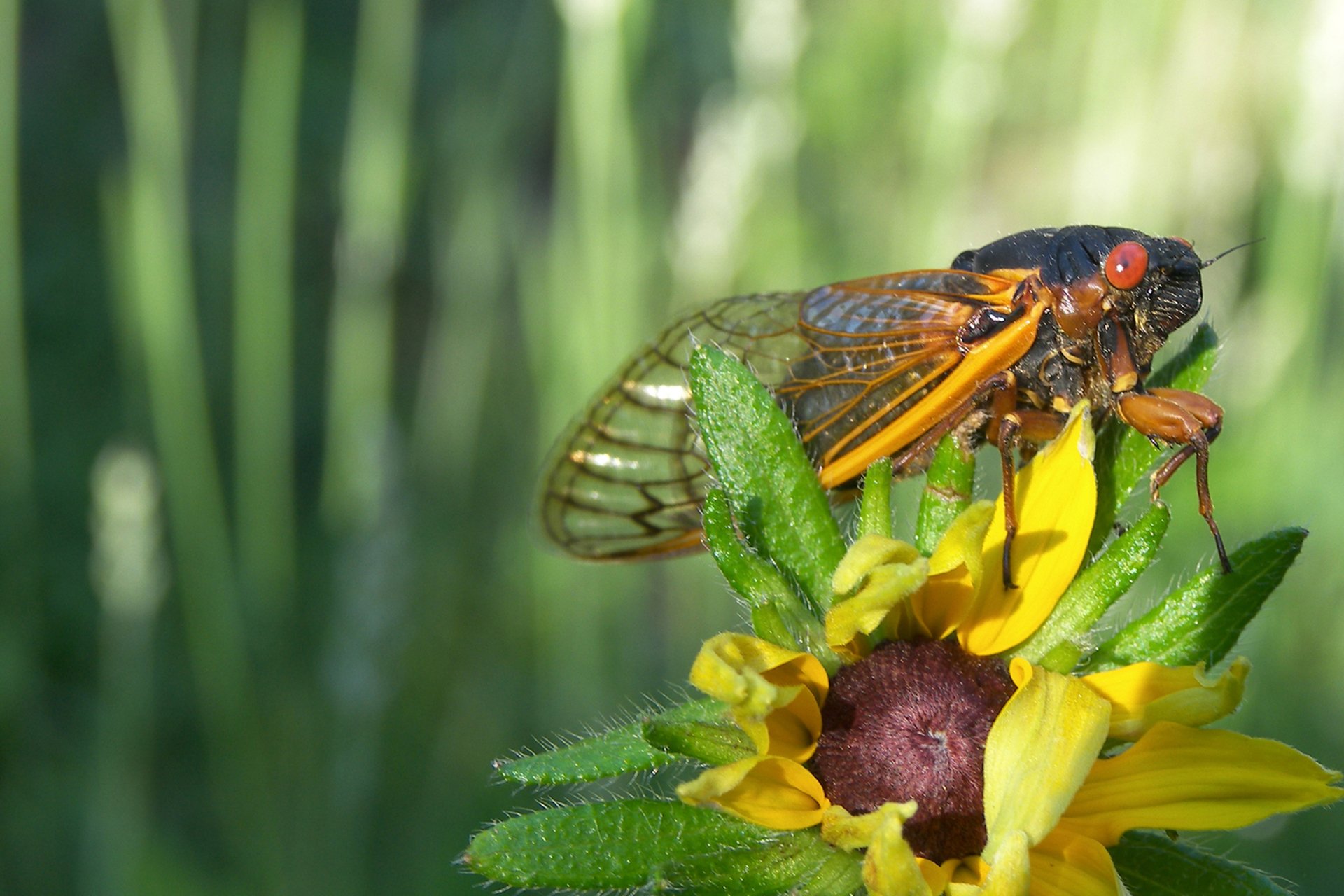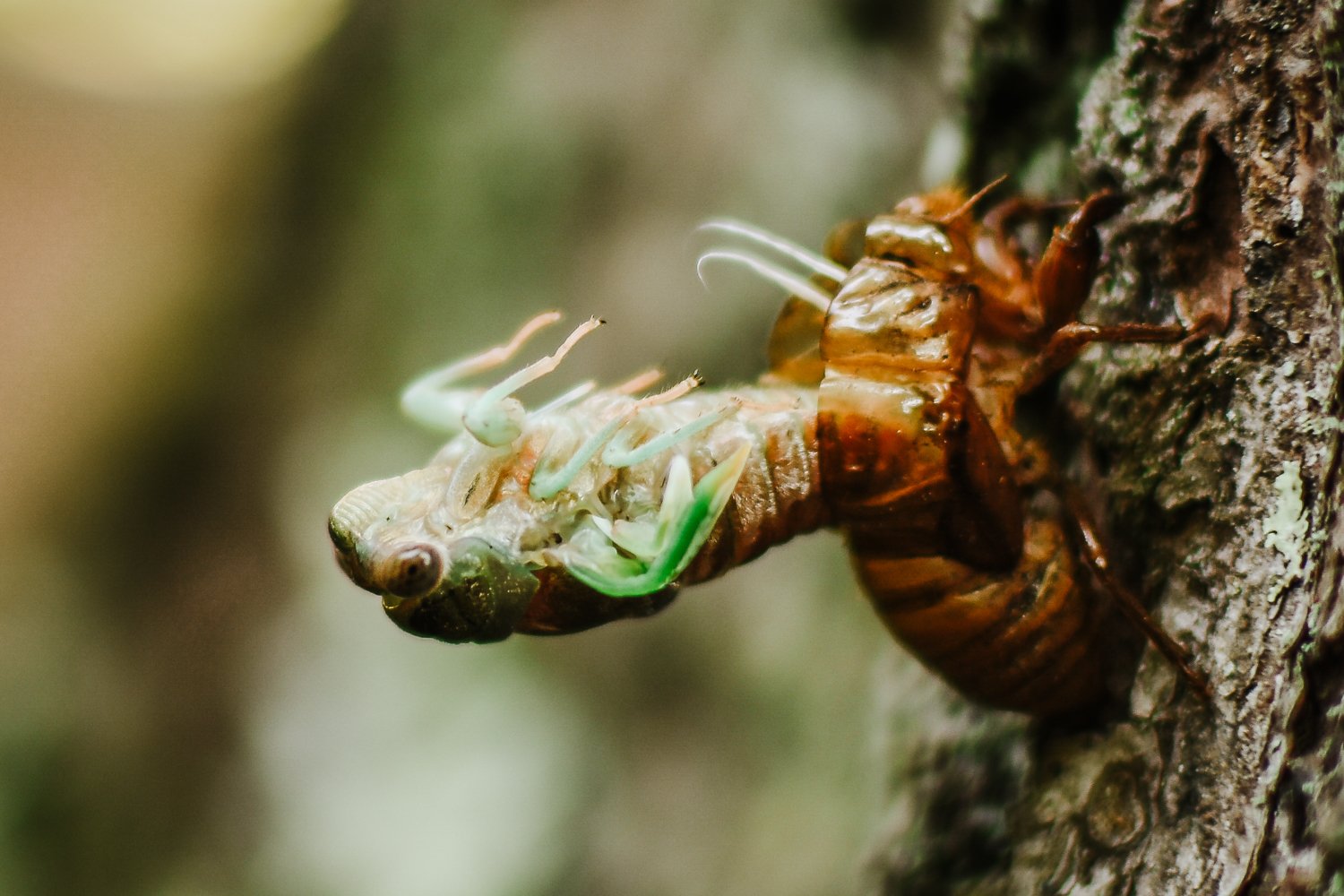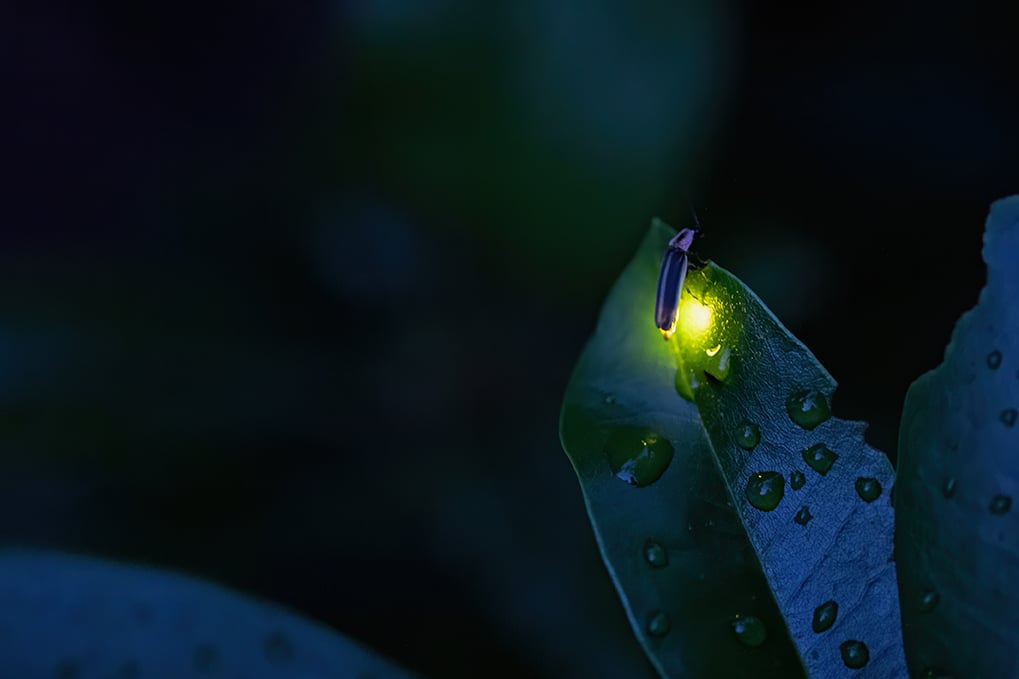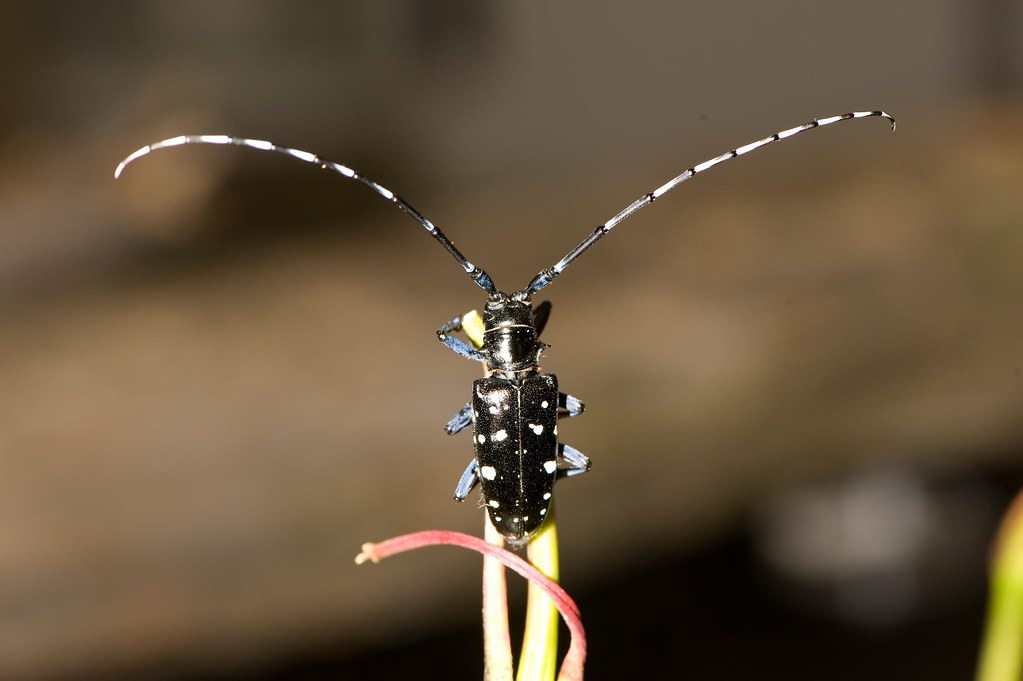Insects & Arachnids
Cicadas in Massachusetts
Cicadas (sih-kay-duhs) are often recognized by their loud chirping and molted exoskeletons left on trees, but there’s much more to this story than meets the eye. From the steady summertime songs of annual cicadas to the rare, booming emergence of 17-year periodical cicadas, these fascinating insects captivate nature lovers and birdwatchers alike.
Types of Cicadas in Massachusetts
Cicadas comprise a family in the insect order Hemiptera. This diverse group also contains leafhoppers, treehoppers, spittlebugs, aphids, and scale insects. More than 2,000 species of cicadas exist worldwide, with nine species documented from Massachusetts. The most common cicada species in Massachusetts is the "Dog Day" Cicada (Neotibicen canicularis)
Periodical Cicadas vs Annual Cicadas
Periodical cicada species emerge from underground every 13 or 17 years, of which Massachusetts has one active brood. The 17-year periodic Brood XIV will emerge in summer 2025, after not being seen since 2008.
Not all cicadas wait 17 years to appear—some show up every summer. Annual cicadas live underground for 2 to 5 years, but their life cycles overlap, so some emerge every year.
How to Identify Cicadas
The annual or dog day cicada emerges every one or two years. It’s approximately 2.25 inches long, medium brown, with a green venation, the vein structure in its wing. Though we hear them each summer, these cicadas are solitary insects; we seldom see them.
The periodical cicada emerges once every 17 years. This smaller (1 to 1.5 inch) cicada is distinguishable by its black body, its more slender form, red eyes, and reddish-orange tinge on the wings. They often cover lower vegetation and any other surface in swarms immediately after they hatch.
Cicada Life Cycle
The unique cicada life cycle plays out above and below ground over many years.
Female cicadas make 40 to 50 slits in the twigs of broad-leafed trees and grasses in which to insert up to 400 eggs. The first stage nymph, which resembles a large, pale ant with front legs enlarged and modified for digging, hatches in six to seven weeks.
It then drops to the ground and buries itself two inches to two feet into the earth. This nymph lives by sucking juices from roots and grows gradually through eight stages before reaching maturity. Though some species are called annual cicadas because they are present every year, all species take at least four years to mature in the ground. The periodical cicada lives more than half of its 17-year lifespan as a mature nymph underground.
When the magic year arrives, the nymph digs to the surface, normally during the night, crawls up a tree trunk, and anchors itself with its claws before splitting out of its exoskeleton. Newly emerged adult cicadas (called "teneral") are soft and have to inflate their wings and harden their bodies before they can fly out to seek mates.
Why Are Cicadas So Loud?
Cicadas are sometimes referred to as "harvester flies" because their "song" is characteristic of late summer days. This astonishingly loud sound comes from a pair of organs called "tympana" located at the base of the males' abdomen.
The tympana are complex mechanisms that consist of a series of three membranes inside a resonating chamber. A powerful muscle flexes one of these membranes (the tymbal), somewhat in the way we pull and release a metal can top to create a loud click. Done in rapid succession and amplified by the resonating chamber, the familiar whine is produced. We can identify different species of cicadas by the distinctive tone of their hum.
Cicada Predators
Cicadas have many natural enemies, including birds, mites, fungal disease, and the cicada killer. This big black and yellow parasitic wasp catches and paralyzes its prey, then drags the victim into a subterranean burrow and uses it for an egg repository and as food for the larva.
Are Cicadas Beneficial or Harmful?
Cicadas are among the most benign of insects. They can buzz impressively when trapped, but they don't sting, bite, or carry any disease communicable to people.
Most likely due to their regular population explosions, periodical cicadas have been confused with certain large grasshoppers that occur in crop-devastating swarms. It is these and other grasshoppers—not cicadas—that we properly call “locusts.”
Neither the root-sucking nymphs nor the adults do any significant damage to trees or other plants.
Because of their great abundance, when female periodical cicadas lay eggs in fruit and ornamental trees, they can sometimes cause the tips of branches to break. Some experts have suggested that shaded forest trees may actually benefit from cicada "damage," which acts, in effect, as a natural pruning mechanism. In addition, birds in particular benefit from cicada booms, feasting on the protein-rich insects and often raising more chicks during emergence years thanks to the abundant food supply.If you’re concerned about small trees in your yard, protect them with netting or any other open-weave material during the adults' life span (five to six weeks).
Cicada Broods in Massachusetts
Among periodical cicadas, numerous different "broods" occur.
All periodical cicadas of the same life cycle (that emerge in the same year) are categorized into broods, or “year class.” Some broods are on 13-year cycles (in the south) and some on 17-year cycles (in the north). Each brood has its own unique range, population size, and emergence cycle. Scientists have identified each brood and designated it with a Roman numeral.
Cicada Brood XIV
There are 15 different broods in North America, two of which occur in New England. Brood XIV may be the only one to occur in Massachusetts. This brood was also one of the earliest recorded observations of cicadas, made by Governor Bradford in 1624. This brood extends from Plymouth and Bristol counties south to Georgia and west to Illinois. They are expected to return to the Cape and Southeastern region in late spring-early summer 2025 and won’t be seen again until 2042. Learn more about the 2025 debut
How You Can Support Cicadas
Cicadas are more than just the sound of summer—they play a vital role in healthy ecosystems. Their songs mark the season, their egg-laying naturally prunes trees, and their sudden emergence provides a crucial food source for birds and other wildlife. By protecting the habitats they rely on—and avoiding chemical pesticides and herbicides—we can help ensure these fascinating insects continue their cycles for generations to come.
Mass Audubon protects the nature of Massachusetts for people and wildlife, from cicadas to songbirds. Join us today and be part of a community working to safeguard the natural world we all share.
Stay Connected
Don't miss a beat on all the ways you can get outdoors, celebrate nature, and get involved.








